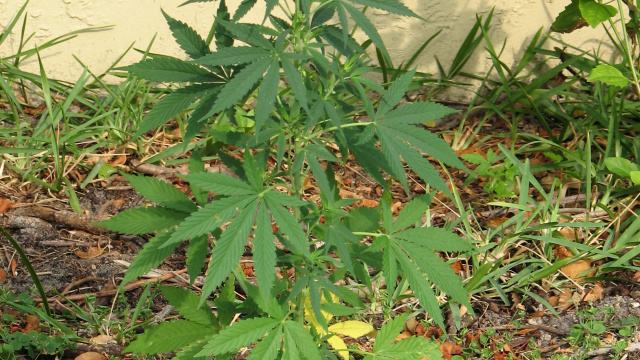 Even though 20 states, including Illinois, have passed laws legalizing medical marijuana, swayed in part by thousands of personal testimonies, current research hasn’t nailed down exactly if, and how, marijuana alleviates all the specific diseases the drug is being legalized to treat, experts say.
Even though 20 states, including Illinois, have passed laws legalizing medical marijuana, swayed in part by thousands of personal testimonies, current research hasn’t nailed down exactly if, and how, marijuana alleviates all the specific diseases the drug is being legalized to treat, experts say.
A number of proponents believe marijuana could benefit people with everything from glaucoma to cancer, and it’s been legalized in Illinois to aid patients with some 40 medical conditions. But opponents of its medicinal use believe the risks of smoking medical marijuana outweigh the benefits, while others question whether patients really improve or only feel like they improve.
Marijuana’s best-known compound is THC, but the plant actually has 105 unique cannabis compounds with potential for medicinal use, proponents say. THC has already been approved by the Food and Drug Administration in synthetic form to help patients with nausea and decreased appetite.
Some scientists believe the plant’s other compounds — called cannabinoids — could have equal promise. Although research has increased in recent years as more states legalize medical marijuana, solid evidence of how individual cannabinoids could help people with specific diseases has been significantly lacking, a review of medical literature and interviews with experts shows.
Researching the potential effects of marijuana’s various components on conditions such as multiple sclerosis, fibromyalgia or lupus could have serious implications for doctors who want to prescribe medical marijuana to patients.
If the specific benefits could be proved, experts say, doctors ultimately would be able to assign particular strains — with varying chemical mixes — to people, depending on their condition. Further research also may help determine optimal doses and whether marijuana works better than other medicines, experts say.
While most medicines derived from nature are tested before they reach the masses, the process to evaluate marijuana has been confounded by its longtime status as an illegal drug, which it retains in the eyes of the federal government. A complicated federal approval process and limited availability of research-grade marijuana add to the difficulty.
The only study specifically cited in Illinois’ law, signed by Gov. Pat Quinn in August and set to go into effect next year, is a 1999 Institute of Medicine report. But Dr. John Benson, a lead editor of the report, said legislators stretched the conclusion of the book-length study when it said modern medical research “has confirmed the beneficial uses of cannabis.”
While the report did say there was promise that marijuana could have medical benefits, it also suggests researchers need to continue to dig deeper into the issue. It also says marijuana should not be smoked, he said.
“Smoking marijuana is not recommended,” the report states. “The long-term harm caused by smoking marijuana makes it a poor delivery system.”
The 14-year-old article has become a primary source for both critics and supporters of medical marijuana — the Drug Enforcement Agency and advocacy groups have cited it to prove opposite points.
“I don’t think whatever the legislature is saying (in the law) is in effect untrue,” Benson, now retired, said from his California home, “but it needs to be qualified.”
Medicine by Legislation
Illinois legislators knew they had an uphill battle getting the medical marijuana bill passed last summer, Rep. Lou Lang said. Lang worked at swaying his colleagues for five years and said he compromised on the list of about 40 conditions — some of which are closely related — that will qualify people for medical marijuana once it becomes available sometime next year.
Illinois legislators, he said, did “a substantial amount of reading,” but they did not evaluate each condition on the list with any scientific methodology.
“I can’t point to specific studies that we used,” Lang said. “Much of it was done by patients telling us what worked and what didn’t. … It became crystal clear some of these things that ought to be in the bill.”
The legislators relied mostly on personal testimonies and compared notes with states that have also passed medical marijuana laws.
“When thousands of people come to me and say they’re using this drug illegally because it’s the only thing that works,” Lang said, “that’s good enough for me.”
Mike Graham, of Manteno, was one person who shared his story with legislators. A little more than a decade ago, he was using 14 different pharmaceuticals. Living with an extremely painful degenerative spine disease, he has been through multiple surgeries in efforts to remedy it. But doctors feared one more could paralyze him, so he took medications for pain instead.
“I didn’t even know my name,” Graham said. “It was horrid.”
When he was in his late 30s, doctors sent him home with a hospice care nurse. After reviewing his medications, she told him he would die early if he continued taking all of them. To his surprise, she recommended pot, he said.
“I almost fell out of bed laughing,” Graham, 51, said. “I come from a law enforcement family.”
Increasingly desperate, in 2002, he decided to give it a try. He was able to cut back on all his previous medications except a morphine pump under his skin. Now, he takes three or four puffs of marijuana in the morning and at night. Once down to 135 pounds, the more than 6-foot-tall Graham now says he’s back up to 250 after regaining his appetite.
“What it comes down to here (is) I wouldn’t be here if I hadn’t made that decision,” Graham said.
While stories like Graham’s are plentiful, doctors and researchers say the nonmedical elements of the plant could have sometimes serious adverse effects.
Dr. Eric Voth, a Topeka, Kan., internist and pain specialist and chairman of the Institute on Global Drug Policy, said relying on anecdotal evidence is dangerous because other factors could influence why patients start to feel better.
“It’s very hard to differentiate whether somebody feels better because they’re stoned or because they’re getting a true therapeutic benefit from the drug,” Voth said.
Health Risks
Smoking marijuana could increase the risk of cancer because of inhalation of tar and other carcinogens in the plant, Voth said. While proponents of its use point to the 105 unique compounds, as detailed in a soon-to-be published report by leading cannabinoid researcher Dr. Mahmoud ElSohly and his colleagues, that may be useful for medicine, there are hundreds more compounds in marijuana that some scientists believe not only have no use but may be harmful.
“You’ve still got (hundreds of other) substances in there,” Voth said. “It just (shouldn’t) be smoked. That is a crazy precedent.”
Illinois’ law allows dispensaries to sell marijuana-infused baked goods in addition to joints, but advocates say it takes longer to feel the effects of marijuana when it’s ingested instead of smoked.
Several papers in scientific journals have found that marijuana use over a long period of time can have negative cognitive effects too. Users can’t concentrate or remember as well as before, in some cases years after they have quit.
Joe Friedman, a Deerfield pharmacist, said the chemical makeup of marijuana could be tested at independent labs, and he hopes it will be in Illinois. Marijuana is designated as a Schedule I drug, defined by the DEA as “drugs with no currently accepted medical use and a high potential for abuse.”
Changing it to a Schedule II drug, which means it is considered dangerous but could have potential medicinal value, Friedman said, would help research progress in learning which type of marijuana is best for which patient.
“When a drug comes on the market, you take the active ingredients, you figure out what these drugs do,” said Friedman, who wants to open a dispensary in Illinois. “You want to be able to identify the active ingredients and the concentrations … and then down the line (after more research is done), you’ll be able to say, ‘OK this one is good for MS,’” Friedman said.
But Voth said he doubts that even identifiable benefits would be enough to outweigh the negative effects, because of other potentially harmful components that are mixed in.
“Essentially what they are, are toxic chemicals,” Voth said. “None of those things would you ever mix with medicine.”
What Some Call a Cure-All
In 1937, the U.S. criminalized marijuana, and today it’s considered a Schedule I drug, along with heroin and LSD.
The FDA approved a synthetic THC pill called Marinol in 1985, acknowledging the drug’s benefits for people with nausea and decreased appetite. In Canada and some parts of Europe, a similar drug called Sativex — containing synthetic THC and cannabidiol — has been approved in recent years, offered as an oral spray. In the late 1980s, scientists discovered a previously unknown biological system called the endocannabinoid system, which proponents for marijuana theorize could show how it works.
The National Institutes of Health reported in 2006 that the system holds “therapeutic promise in a wide range of disparate diseases.”
But experts say more research is needed before determining exactly what the system may be able to do.
Mary Lynn Mathre, a founding partner of Patients Out of Time, a marijuana advocacy group that focuses on health issues, said the leading theory regarding the system is that the human body has cannabinoid receptors — essentially key holes that cannabis compounds fit into, helping the body regulate.
“You take cannabis, which has similar chemicals that we need, and you put it in the body and they work if we’re not making the cannabinoids that we need,” explained Mathre, a longtime registered nurse. “You can liken this to a diabetic. Their pancreas isn’t making insulin, so we give them insulin. If our body can’t make this chemical, there happens to be this plant on earth that is there to supply us.”
A Call for Research
Many prominent health organizations — including the American Medical Association, the American Cancer Society and the National Multiple Sclerosis Society — support researching cannabinoids’ potential but don’t endorse the legalization of medical marijuana. The American Nurses Association and the American College of Physicians support medical marijuana’s legalization, while also calling for more research.
“Science has been doing this kind of thing for years,” Voth said. “They find a (naturally) occurring substance and then they try to dissect down to what really works, isolate it and synthesize it. That’s what pharmaceutical companies do all the time.”
While THC has a few proven medical benefits, it’s possible that other compounds that don’t have the same euphoric effect could relieve symptoms just as well or better than THC, researchers and pharmacists say.
Pritesh Kumar, a researcher who specializes in cannabinoid pharmacology and is a consultant for Chicago-based Quantum 9, a medical marijuana technology firm, has focused on CBD, a compound in marijuana some scientists believe could have significant benefits.
Research like Kumar’s, studying isolated compounds in marijuana, has picked up in recent years, but widespread research looking at how specific diseases and cannabinoids interact has not been done.
Friedman, the Deerfield pharmacist, said he’s hopeful that with medical marijuana legalization on a faster track than ever, disease-specific research in the U.S. will pick up.
“As marijuana gains popularity and (if it) moves from Schedule I to Schedule II, research will really kick in,” Friedman said. “This is a whole new industry, and this is going to get bigger and stronger as time goes on.”
Source: Chicago Tribune (IL)
Author: Ellen Jean Hirst, Tribune Reporter
Published: October 27, 2013
Copyright: 2013 Chicago Tribune Company, LLC
Website: http://www.chicagotribune.com/



Leave a Reply